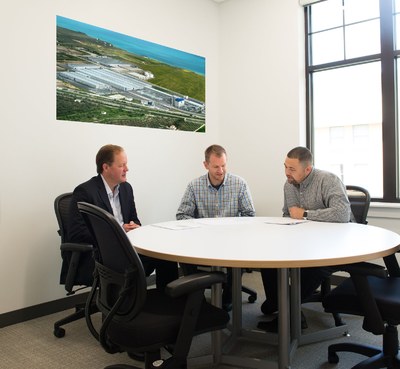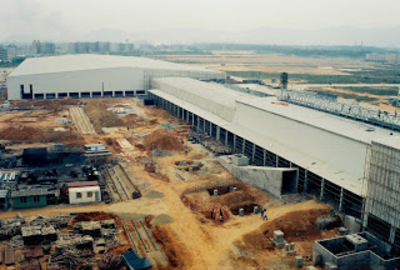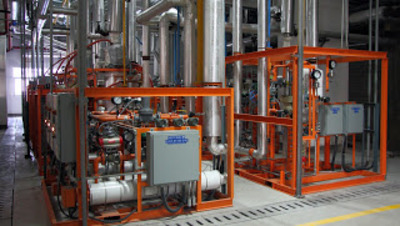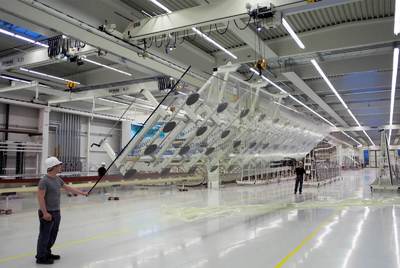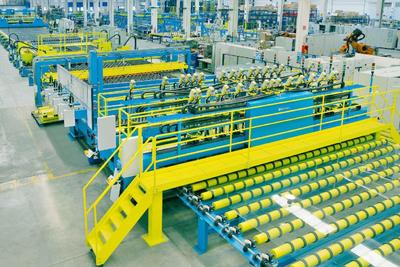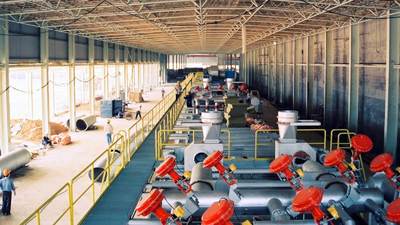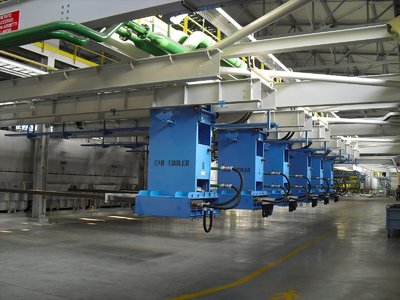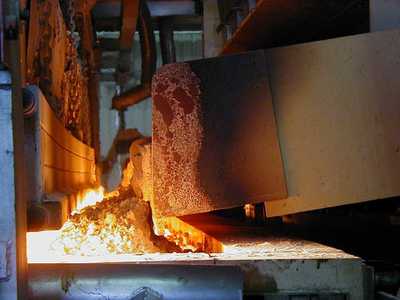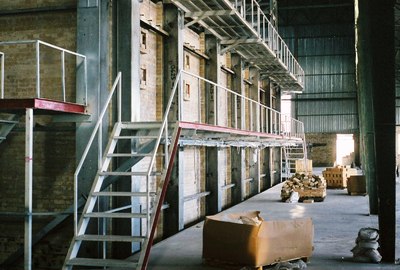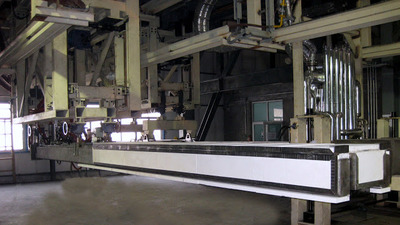Float Glass Annealing Lehr
What is a lehr?
A glass annealing lehr oven- often just referred to as a 'lehr', is a long, temperature controlled, kiln. Lehrs are typically 6m wide and 120m long, with an adjustable temperature gradient through which the glass passes. In the case of containers and tableware, the product is transported on a conveyor belt and for flat glass on a special roller conveyor. Adjustable electric heating elements and air heat exchangers are located in the lehr to maintain a consistent temperature profile across the width of the glass ribbon.
Why is a lehr used?
If the glass ribbon were to cool in ambient temperature air, the surfaces would cool much more rapidly than the internal body of the glass. This temperature gradient would cause the surface to be in severe compression, which will cause the glass to break spontaneously as the stresses exceed the strength of the glass.
What is annealing of glass?
After the formed glass ribbon leaves the tin bath, the glass is at a temperature of nearly 600°C, well above its annealing point. The rollers convey the glass into the A0 section of the lehr. This first section of the lehr only maintains a uniform temperature across the ribbon, usually with edge burners.
As the glass enters the B sections of the lehr, the glass temperature is cooler; around 540°C which corresponds to the upper end of the glass annealing temperature range. The annealing temperature for float glass is from 540°C to 470°C. The B zones use heating and cooling to cool the glass—in a controlled process— below its strain point, the lowest temperature at which permanent stresses within the glass can form.
The glass enters the mass air section of the lehr next. The goal in the mass air section is to cool the glass, to near room temperature, quickly and uniformly without causing the glass to break. As the name of this section implies large fans blow air directly onto the top and bottom of the glass ribbon. Dampers are used to bias the air so that temporary internal stresses are minimized.
At the end of the lehr, the glass is cool and ready to be cut and stored.
Tempering vs. Annealing
The glass annealing process differs from the glass tempering process in that the glass after annealing is only slightly in compression, but the glass after tempering is in extreme compression. Tempered glass production begins by loading precut annealed glass into a tempering oven. The oven reheats the glass to its annealing temperature and then cools it quickly compared to the annealing process of slowly cooling the glass below the strain point.
The faster the glass is cooled, the more compression the final product is in. Glass can’t be tempered on-line during its original production because it is still a constant ribbon of glass and cannot be cut into sizes after the tempering process.
